- Destinations
- Travel Styles
- About Us
- Contacts
- Destinations
- Travel StylesTravel StylesBy ThemeBy Duration
- About UsOur Cutomer FeedbackGet Our BrochureFAQsTerms & Conditions
When we think of Vietnam, a multitude of images come to mind: Halong Bay, the conical hat, ao dai (tunic dress), lotus flowers, temples, etc. Discover Vietnam through its 12 most important symbols that are deeply rooted in the daily life of Vietnamese people and that you will have the opportunity to see during your next trip to Vietnam.
The national flag is a cornerstone of Vietnam’s identity, reflecting its resilient history. First documented in 1802 under the Nguyen Dynasty, the flag evolved through conflicts and upheavals. In 1940, the Socialist Republic of Vietnam introduced the iconic red flag with a yellow five-pointed star, symbolizing unity. It became North Vietnam’s official flag in 1945 after independence and was adopted nationwide in 1976 post-reunification.
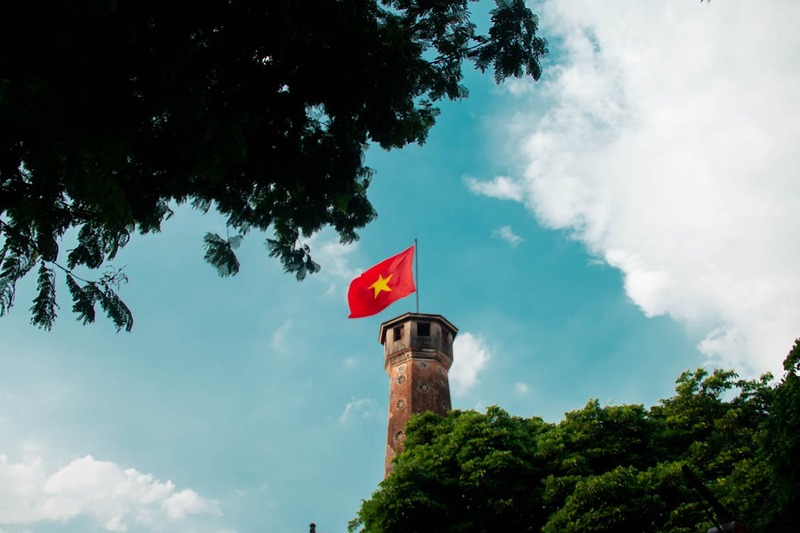
📌 Colors and Meaning:
The red background honors the blood shed by Vietnamese people in their fight for independence. While the yellow star represents the unity of workers, peasants, soldiers, intellectuals, and youth in building a socialist nation.
Travelers will see the flag proudly displayed across Vietnam on government buildings, homes, and especially during National Day (September 2) and Reunification Day (April 30). Iconic flag towers, like those at Hanoi’s Thang Long Citadel, Hue’s Imperial City, and Lung Cu in Ha Giang (marking the northern border), symbolize national pride and sovereignty. To get a real feel for the history, consider a Hanoi travel itinerary that includes a visit to the Ho Chi Minh Mausoleum complex, where the flag is prominently displayed, or explore the ancient capital of Hue on a Vietnam highlight tour to see its historical flag tower.
>>> More about the Vietnamese flag: Click now!
The lotus flower, surely Vietnam’s national floral symbol, embodies serenity, purity, and spiritual growth. Rising pristine from muddy waters, it mirrors the Vietnamese spirit of overcoming adversity to achieve beauty and enlightenment. In Buddhism, the lotus symbolizes the soul’s journey: rooted in material desires, navigating life’s challenges through its stem, and blooming into clarity with its radiant flower.
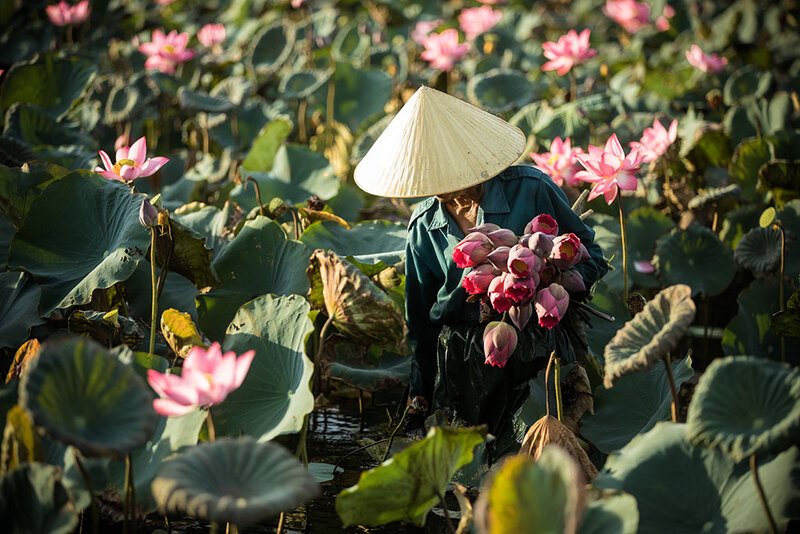
The lotus is woven into Vietnam’s culture, adorning poetry, art, and religious sites. The One Pillar Pagoda in Hanoi, shaped like a lotus on a single stem, reflects this sacred emblem. Blooming vibrantly in summer (June to August), lotus flowers transform ponds, including those near Ha Long Bay, a UNESCO site, into stunning pink and white displays, captivating travelers. In Vietnamese tradition, the lotus represents resilience, inspiring folk songs and temple sculptures, such as the sacred “Lien Hoa Toa” (Buddha’s lotus throne), symbolizing wisdom and peace. To witness vast fields of blooming lotus, visit West Lake in Hanoi or the Mekong Delta during the summer months!
>>> Read More: Where to See Lotus in Vietnam?
The nón lá, or Vietnamese conical hat, is an enduring symbol of Vietnam’s rural charm and resilience. Handcrafted from palm leaves and bamboo, it shields farmers and vendors from the sun and rain while adding elegance to the traditional áo dài. The origins of the nón lá date back over 3,000 years. Creating a nón lá takes over 10 meticulous steps and 4 hours, transforming simple materials into a lightweight, durable hat that embodies Vietnamese craftsmanship.
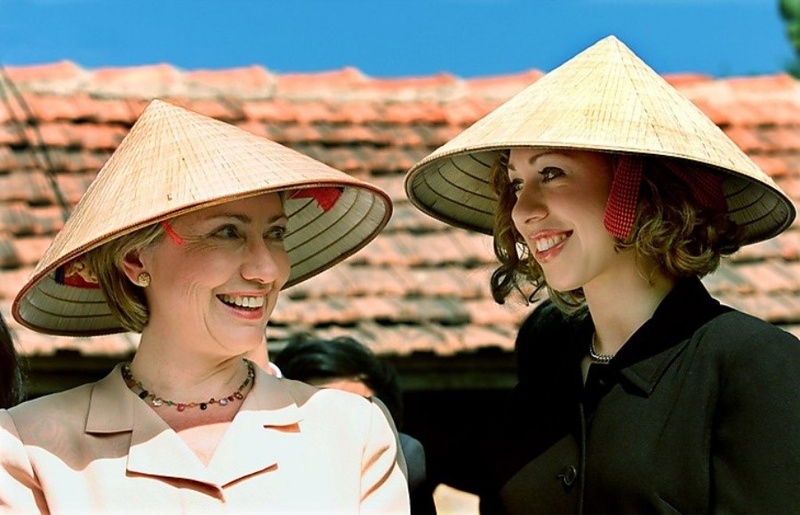
In Hue, the former imperial capital, artisans craft the finest nón lá, weaving poems or intricate motifs between palm leaves, visible when held to light. These hats are not just practical but also cultural treasures, worn in festivals, performances, and paired with áo dài in cities for a graceful look. Visitors can find them at Dong Ba Market in Hue, Ben Thanh Market in Ho Chi Minh City, or Hanoi’s Old Quarter, with prices ranging from $1.20 to $12. The nón lá’s timeless design reflects Vietnam’s spirit of simplicity and perseverance.
>>> Related article: Top 13 Must-Have Souvenirs in Vietnam
The Ao dai, one of the most iconic Vietnam symbols, embodies the elegance of Vietnamese women and national pride. A timeless symbol of cultural heritage, alongside the conical hat, the Ao dai is a traditional Vietnamese dress worn for over three centuries. It features a long, form-fitting tunic with side slits, paired with flowing trousers, crafted from silk or lightweight fabrics ideal for Vietnam’s tropical climate. The design accentuates the wearer’s silhouette while maintaining modesty and sophistication. Colors carry deep meanings: white for purity and innocence, red for luck and happiness, and blue for gentleness.
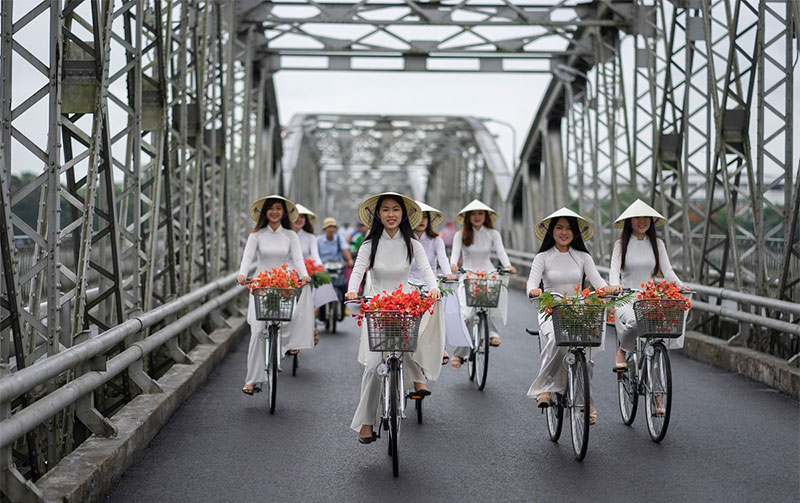
Worn on special occasions like weddings, Tet (Lunar New Year), official ceremonies, or by students and professionals, the Ao dai reflects Vietnam’s rich traditions. After a decline post-Vietnam War, it saw a resurgence in the 1990s, inspiring modern fashion designers.
📌 Where to Experience the Ao dai?
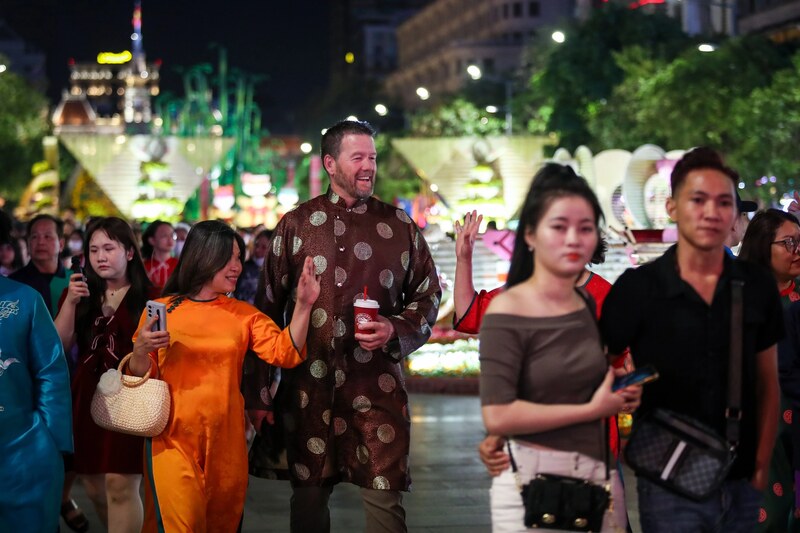
>>> Read More: Best tailors in Hoi An Vietnam in 24 hours
Vietnam’s 4,000-year rice-farming tradition shapes its remarkable landscapes and rich culture. In northern Vietnam’s Sapa, Ha Giang, Mu Cang Chai, Cao Bang, farmers carve rice terraces into mountains, creating Southeast Asia’s most iconic views. In the central and southern regions, like the Mekong Delta, vast rice plains stretch endlessly, where farmers and water buffalo work by hand, embodying resilience and simplicity.
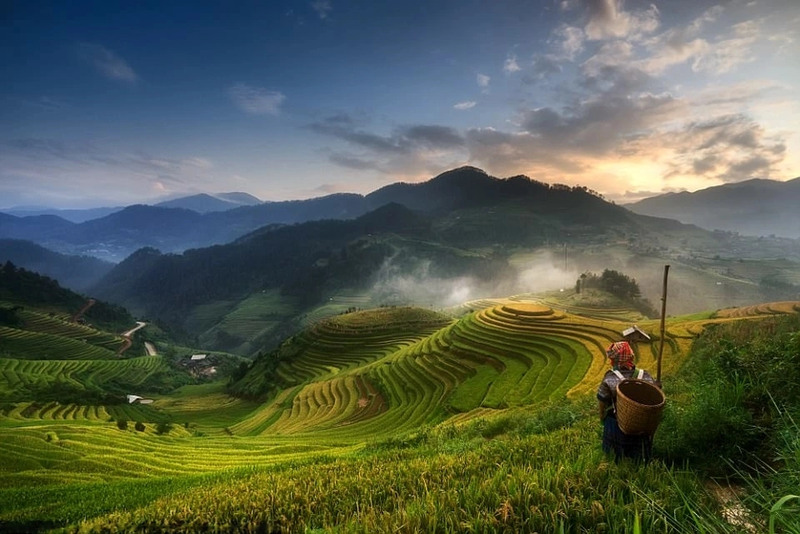
📌 Cultural Significance:
Rice is Vietnam’s staple, savored at every meal in dishes like phở (rice noodle soup), bánh cuốn (rice rolls), and cơm tấm (broken rice). During Tết, the Lunar New Year, families craft bánh chưng, bánh tét from sticky rice to celebrate prosperity. Rice also holds spiritual weight, used in offerings to honor ancestors. You can explore rice fields in Northern Vietnam, particularly during the planting season (May-June) for vibrant green or harvest season (September-October) for golden hues, or join Mekong Delta tours to witness this timeless way of life, tasting authentic dishes at local markets like Cai Rang. Consider a Vietnam trekking tour in the northern mountains for an unforgettable experience amidst these stunning landscapes.
>>> Discover: 7 Amazing Places to Catch Stunning Rice Fields in Vietnam!
Like rice, bamboo is a deeply symbolic element in Vietnamese culture. Growing swiftly across the countryside, this versatile plant fuels traditional craftsmanship. In rural villages, bamboo has built homes for centuries, with its sturdy frames, woven partitions, and smooth floors shaping the heart of Vietnamese life, often nestled by serene ponds.
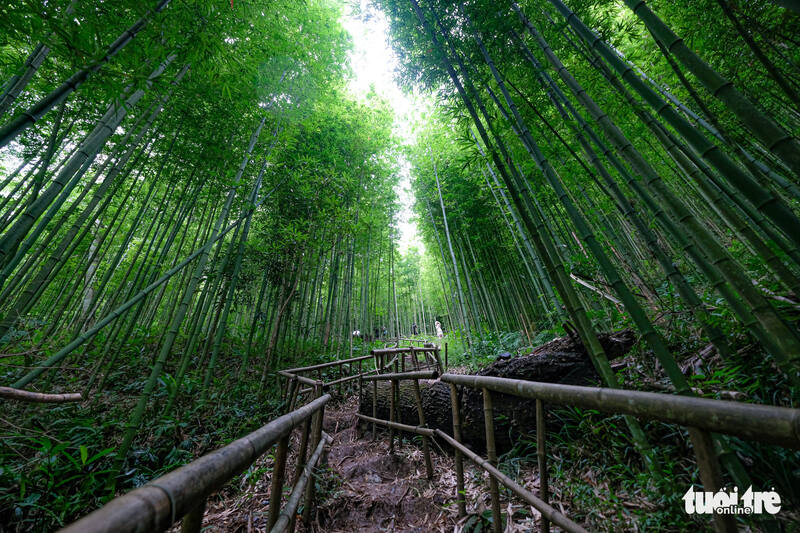
Prized for its flexibility and strength, bamboo crafts everything from furniture and baskets to conical hats, fish traps, chopsticks, and farming tools. Artisans in Phú Vinh village near Hanoi spend hours weaving these treasures, some embedding poetic designs that glow under light. Like the Vietnamese spirit, bamboo bends under pressure but never breaks, a metaphor woven into folk tales and proverbs. Visit a bamboo workshop in Phú Vinh (a renowned craft village just outside Hanoi), or Hanoi’s Old Quarter, and Tan Bamboo in Hoi An to see this craft in action and bring home a piece of Vietnam’s enduring heritage. These items make for unique and sustainable souvenirs.
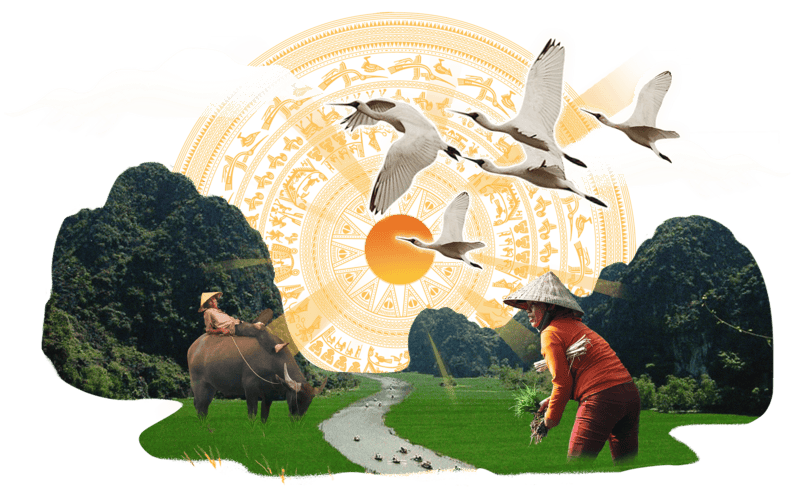
Rice and bamboo reflect Vietnam’s agricultural roots, but the water buffalo, a living Vietnam symbol and farmers’ companion, truly shines, as captured in the folk song, “the buffalo goes first, the plow follows,” showing how it eases the farming burden. This iconic Vietnam symbol is deeply tied to agriculture, traditions, and daily life, helping generations plow rice fields, transport goods, and sustain livelihoods.
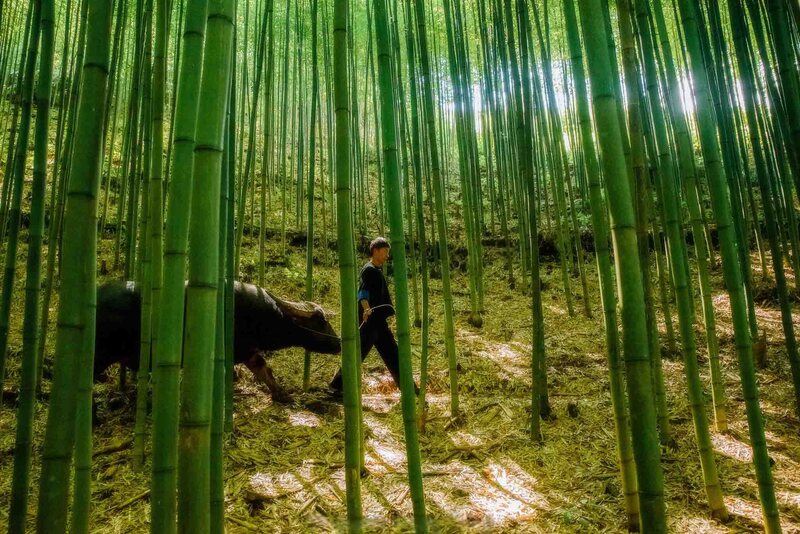
Beyond farming, the water buffalo holds a special place in Vietnamese culture, folklore, and festivals. It appears in traditional paintings, legends, and proverbs, symbolizing peace and harmony. With a young boy playing the flute atop a buffalo; a beloved image of Vietnam’s serene rural life. They are part of the 12 Vietnamese zodiac signs, where the buffalo is admired for its diligence and patience. Representing hard work, perseverance, and the peaceful spirit of Vietnamese farmers, the water buffalo remains a source of national pride across generations.
📌 Where to Experience the Water Buffalo?
See these gentle giants in action in the Mekong Delta or northern mountains, where they still work in rice paddies. You might even have the chance to interact with them on a rural Vietnam excursion. Visit Do Son in Hai Phong for the vibrant Buffalo Fighting Festival in September or the Buffalo market in Bac Ha held every Friday. These experiences connect you to a timeless Vietnam symbol, blending tradition and rural charm.
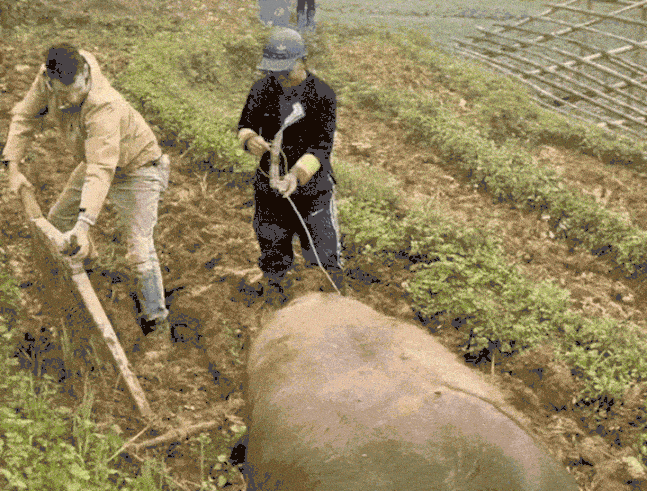
The Lac bird, a cherished Vietnam symbol, soars as a mythical emblem of ancient Vietnamese culture, deeply rooted in the Dong Son civilization (circa 1000 BCE). Often called Vietnam’s national bird, its elegant, curved-winged form graces Dong Son bronze drums, symbolizing freedom, strength, and the spiritual bridge between heaven and earth. This iconic Vietnam symbol reflects the resilience and aspirations of the Lac Viet people, ancestors of modern Vietnamese, and their harmony with nature, especially water and agriculture.
Beyond its historical roots, the Lac bird inspires Vietnamese art, from temple carvings to embroidered textiles, embodying enduring cultural identity and national pride. Its graceful image appears in folklore and modern crafts, capturing the spirit of a nation that rises above challenges.
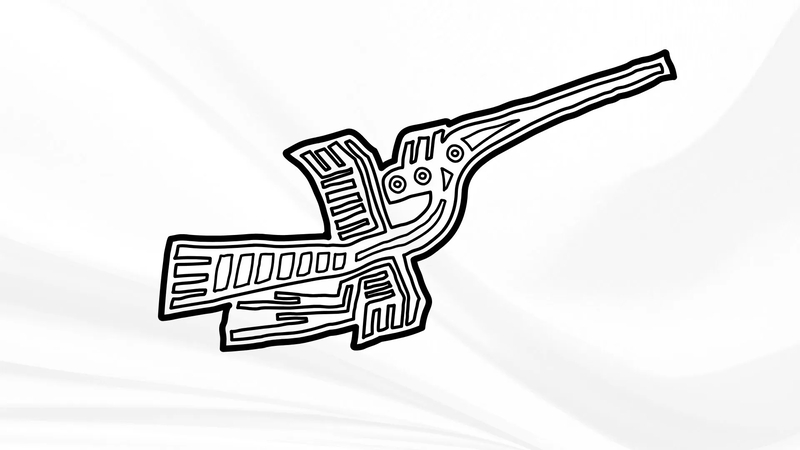
📌 Where to Experience the Lac Bird?
The Dong Son bronze drums, iconic Vietnam symbols, stand as masterpieces of ancient craftsmanship from the Dong Son culture (600 BCE to 3rd century CE). These bronze artifacts, with their golden-brown patina, radiate majesty and power, embodying the wealth, spirituality, and cultural heritage of ancient Vietnamese society. Found primarily along the Red River Delta and across Southeast Asia, they showcase the far-reaching influence of the Dong Son people.
Each drum is adorned with intricate engravings of Lac birds, warriors, boats, and sun motifs, reflecting the harmony between nature, humanity, and the cosmos. These designs offer a window into ancient Vietnamese life, from daily rituals to cosmic beliefs. Used in ceremonies, warfare, and spiritual practices, the drums highlight the advanced artistry and identity of their creators.
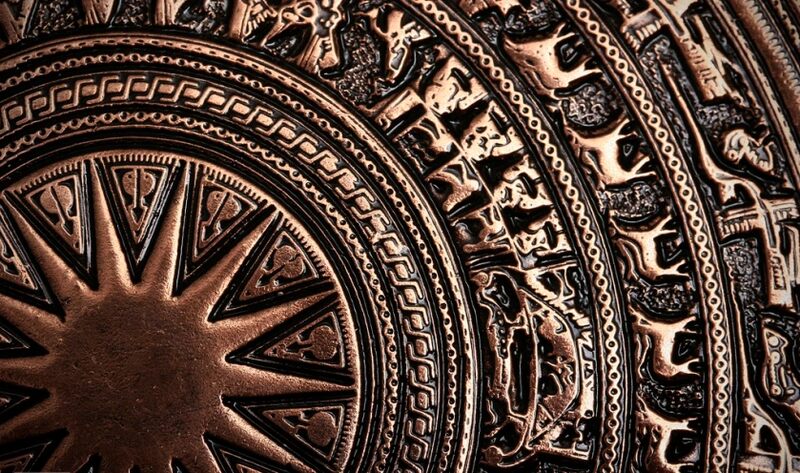
Thuốc lào, a traditional Vietnam symbol, has been part of the country’s culture since the feudal era (11th–19th centuries). This strong tobacco, smoked through a bamboo điếu cày pipe, brings people together across all classes. Farmers take a break under a tree, puffing on a pipe after a hard day’s work, while the upper class once used fancy pipes lit by servants. It’s a simple tradition that shows Vietnam’s shared way of life.
Today, with smoking less common due to health concerns, thuốc lào is still alive in Northern Vietnam. Check out street tea shops in Northern Vietnam, where folks young and old chat and share a pipe, keeping the custom going.
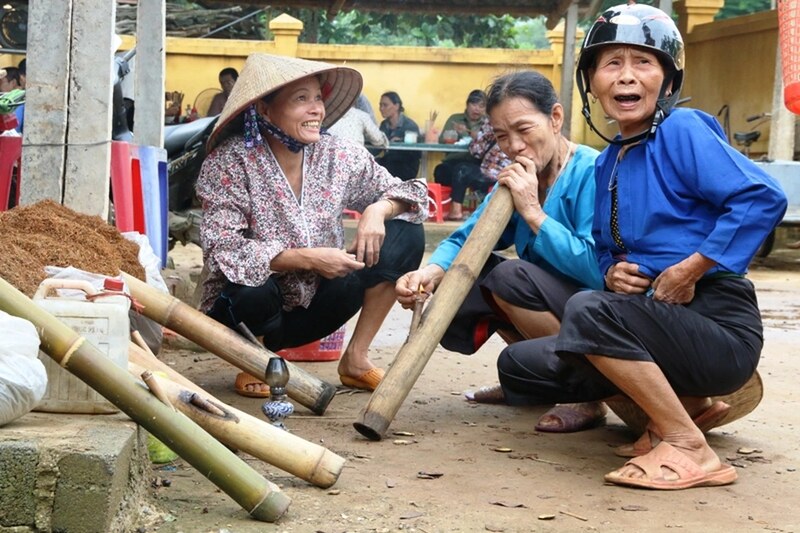
>>> Related article: Thuoc Lao – Vietnamese Tobacco Like No Other!
Betel chewing, a timeless Vietnam symbol, has been a cultural tradition since the Hùng kings’ era (circa 2879 BCE), deeply woven into Vietnamese life. Once as common as tea in Britain, this practice shaped ancient beauty standards, especially through the custom of blackening teeth. Women chewed betel leaves, which stained their teeth a striking red-black, seen as a mark of elegance alongside rosy cheeks and red lips. The slow chewing released a fragrant red juice, freshening breath and promoting dental health.
Though modern preferences for white teeth have lessened its use, betel chewing remains a cultural touchstone in rural Vietnam.
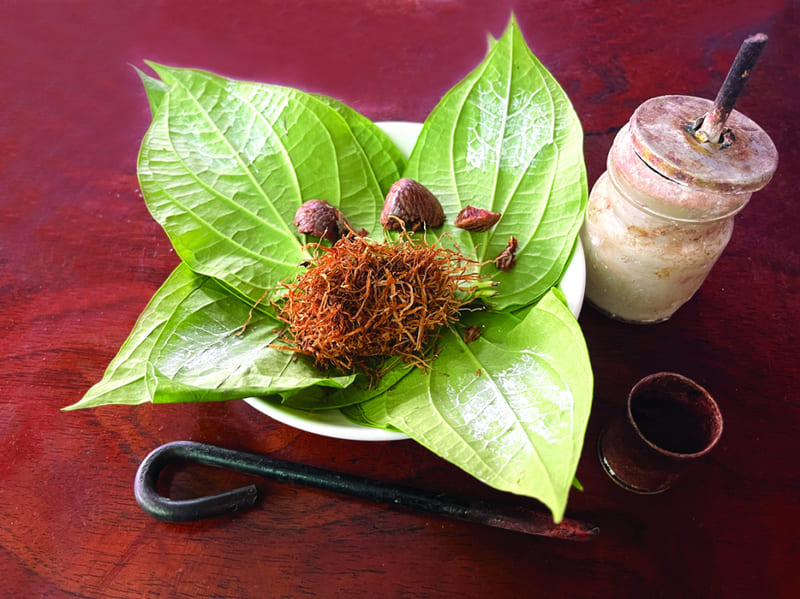
Fragrant and flavorful, Vietnamese cuisine shines through phở, a cherished Vietnam symbol and one of the world’s most celebrated dishes. Originating in Nam Định, south of Hanoi, this iconic soup features a rich beef broth, simmered for hours with bones, star anise, cinnamon, and coriander, creating a soul-warming aroma.
Traditional phở combines flat rice noodles, tender beef or chicken, and fresh herbs like chives and basil. Vietnamese enjoy it at any meal, especially breakfast, often at bustling street stalls. To experience this Vietnam symbol, visit Phở Gia Truyền or Phở Thìn in Hanoi, or Phở Lê in Ho Chi Minh City, where locals savor authentic bowls for $1–$3. From Hanoi’s chilly mornings to global Vietnamese restaurants, phở embodies the nation’s culinary heritage and welcoming spirit.
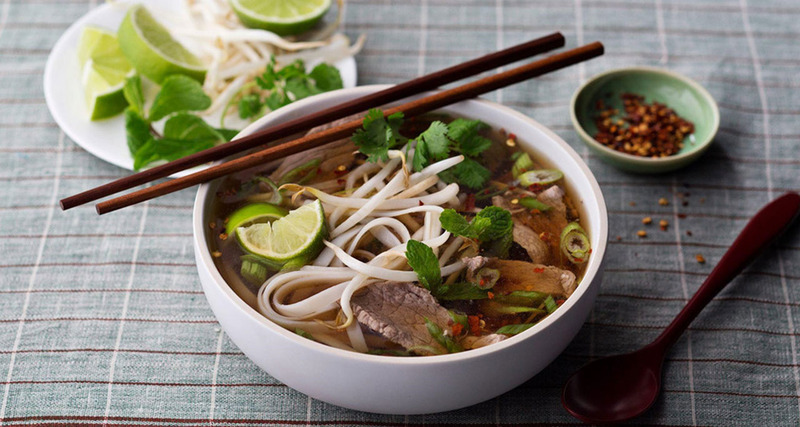
>>> Read More: How to make Pho at home? And the best Pho restaurants!
While many cultural motifs resonate across Southeast Asia, Vietnam boasts symbols that are distinctly its own, reflecting a unique history and identity. For travelers seeking a deeper understanding of Vietnamese heritage, recognizing these unique emblems offers a richer cultural experience.
The Lac Bird, for instance, is a powerful mythical emblem deeply rooted in the ancient Dong Son civilization (circa 1000 BCE). Its elegant, curved-winged form, prominently featured on Dong Son bronze drums, symbolizes freedom, strength, and the spiritual connection between heaven and earth, embodying the aspirations of the ancient Lac Viet people, ancestors of modern Vietnamese. While dragons are revered across many Asian cultures, the Vietnamese dragon often features a long, undulating body, representing the nation's rivers and water, and is intrinsically linked to specific Vietnamese legends and the agricultural cycle, distinguishing it from other regional interpretations.
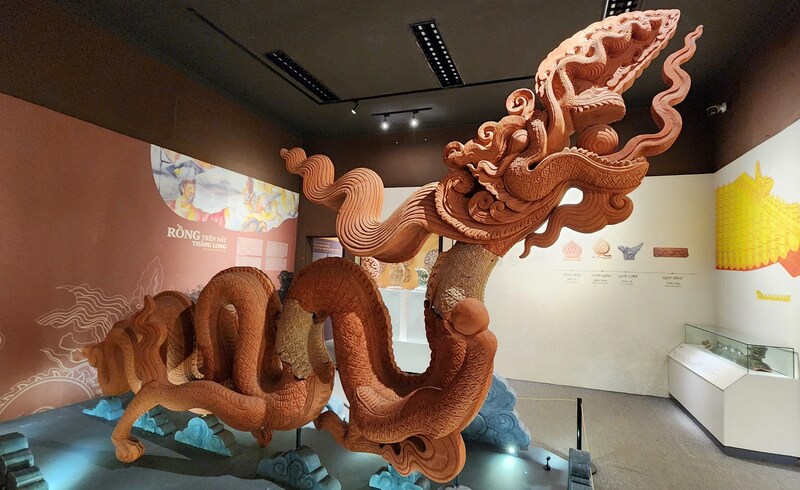
Another fascinating, distinctly Vietnamese guardian figure is the Nghê. Often found guarding temples, pagodas, and communal houses, the Nghê is a mythical creature with characteristics of a lion, dog, and sometimes a dragon, but with a uniquely Vietnamese aesthetic. Unlike the more universally recognized Chinese lion-dogs (foo dogs), the Nghê's form and symbolism are deeply embedded in Vietnamese folklore and architectural traditions, serving as a protective spirit and a symbol of wisdom and loyalty. You can often spot Nghê statues at historical sites, pagodas, and communal houses throughout Vietnam, particularly in the northern and central regions.
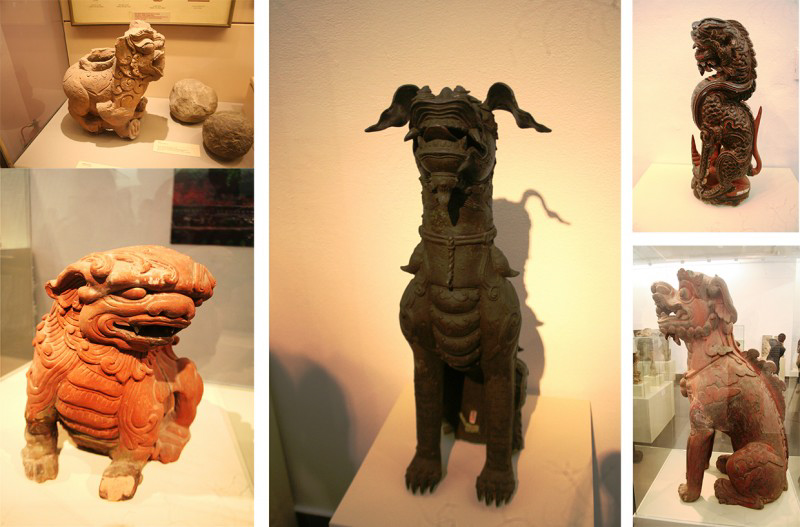
Understanding these nuances allows visitors to appreciate the depth of Vietnamese culture beyond its more widely recognized symbols, offering a truly authentic perspective on the nation's enduring identity. For those looking to customize your tour Vietnam to focus on unique cultural insights, these symbols offer a compelling starting point.
Which of these 12 symbols of Vietnam do you find the most impressive? Share your opinion with us!
.jpg)
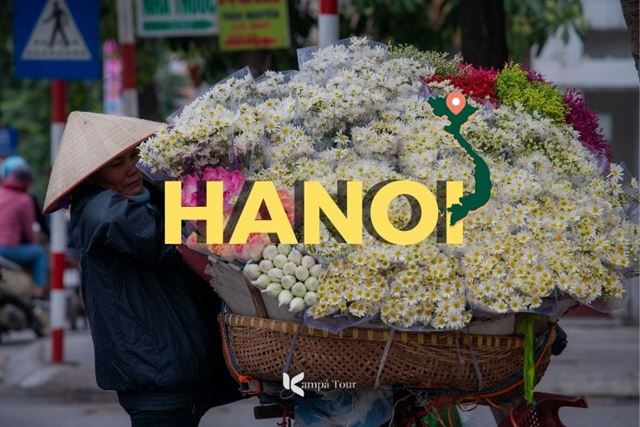
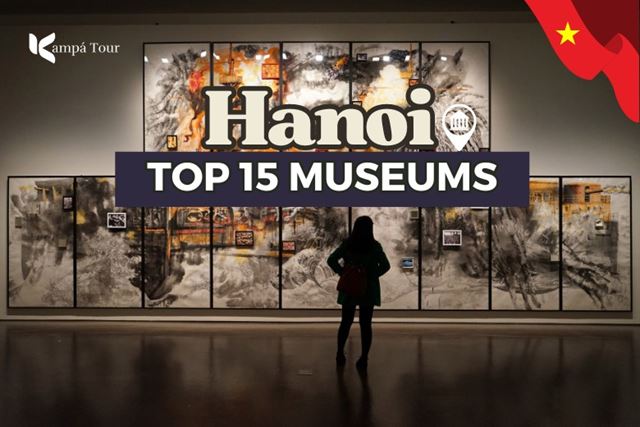
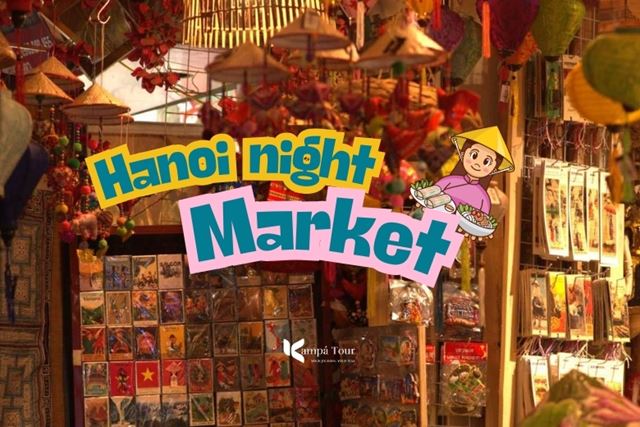
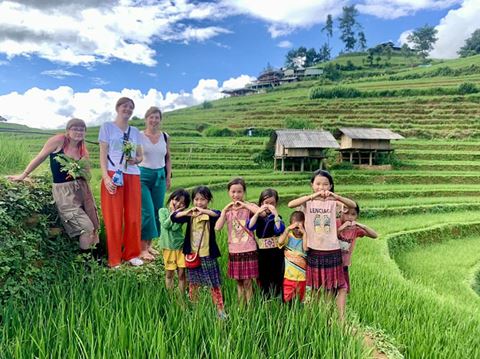 Off The Beaten Track Tours
Off The Beaten Track Tours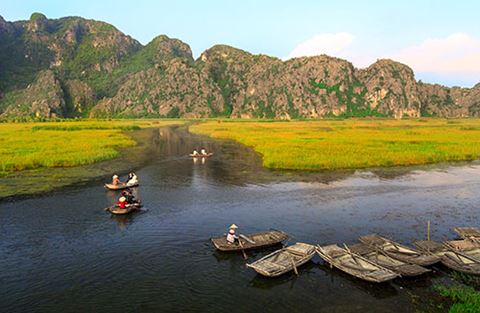 The Essentials
The Essentials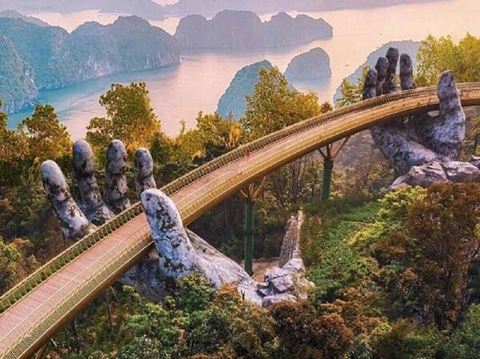 With family
With family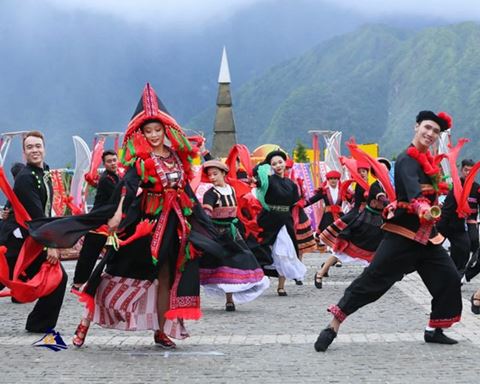 The Essentials
The Essentials